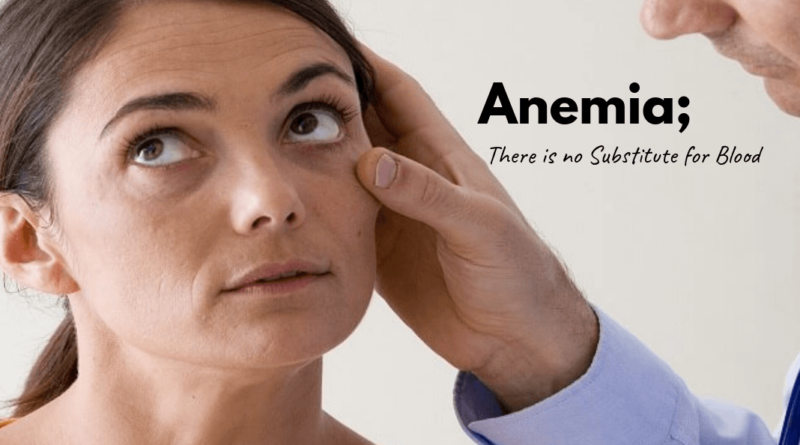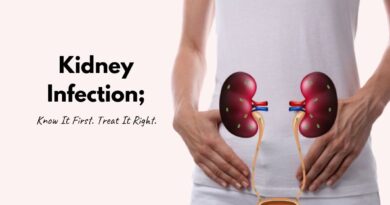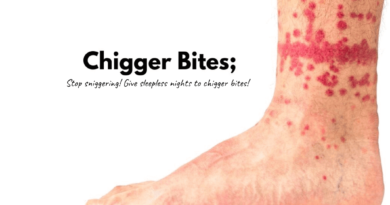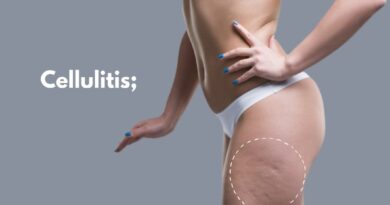Anemia; The Lack of IRON Could Kill You – Use These Natural Treatments to Get Rid of Anemia
Anemia is a condition that develops when there are not enough red blood cells or hemoglobin in your blood. Hemoglobin is the main component of red blood cells. When red blood cells and hemoglobin levels are abnormal, cells do not get enough oxygen resulting in lethargy and fatigue — thus making it the most common symptom of anemia.
There are many types of anemia(1), each having its own cause. This condition can either be a temporary or long-term one. When not treated in time, anemia can become fatal. People who take poor diet and who have chronic health conditions are more susceptible to the disorder. It is alarming to see the rate at which the number of women is suffering from anemia.
Table of Contents
How to Cure Anemia Naturally?
Enough supplements and treatments are already available in the market to treat this condition. However, natural remedies are the best suited and effective ones. You may be able to prevent anemia by eating healthy and making specific changes to your lifestyle.
Here are the best tried and tested home remedies for anemia:
CURE 1: Foods For Anemia
1. Red Meat
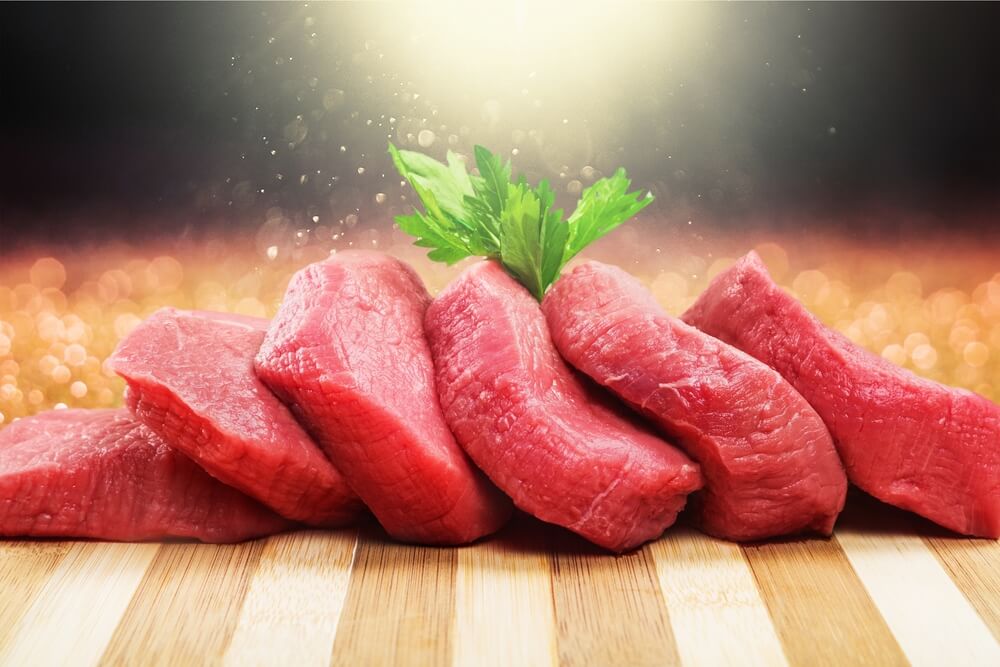
Lean red meats are one of the best sources of iron. Incorporating red meat helps in treating anemia.
Why Red Meat?
One of the most common types of anemia is Iron deficiency anemia, also called Feropenia. Iron plays a significant role in producing hemoglobin. Poor diet and your body’s inability to absorb iron can cause its deficiency. Red meat is one of the best food source high in Iron for anemia. It is stated that our body absorbs more iron from animal supplements(2) in comparison to the plant supplements.
How to Use?
There is a list of food which falls under the section of Red Meat. It includes beef, pork, lamb, mutton, veal, and venison.
What You Need: Any meat from the list mentioned above.
Procedure:
Pick the type of meat you prefer. You can consume it in any form like salad, stir fry, curry or grilled. Pair it up with a section of stir-fried veggies to make it a complete meal. Adding red meat to your diet can regularize your hemoglobin levels making it an apt iron deficiency treatment for anemia.
2. Poultry
The foods that fall under the category of poultry are Chicken, Turkey, and Goose.
Why Poultry?
So what if you are not a red meat person? The lean cut chicken is another top food and the best source of iron for anemia. Poultry also is high in iron and can be one of the readily available foods for anemia.
How to Use?
What You Need: Any poultry from the list mentioned above.
Procedure:
Pick any poultry meat you prefer. Have it in any form, either grilled, sautéed or stir-fried with a selection of veggies on the side.
3. Seafood
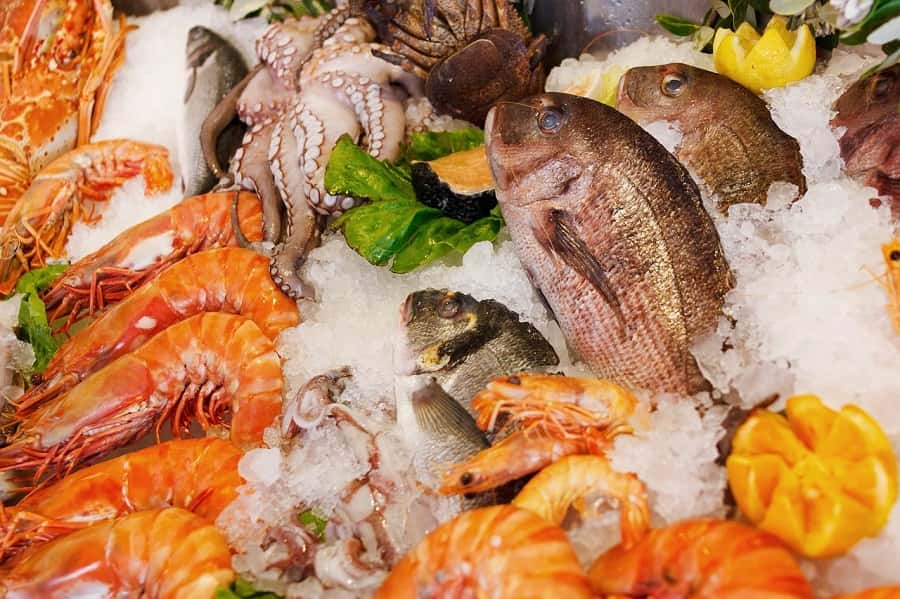
Seafood fans can take note too. Fish, especially the shell variety is one of the best foods for anemia.
Why Seafood?
Seafood is a good source of iron. You are thus making it a very good option to treat iron deficiency anemia.
How to Use?
Things You Need: Fish (preferably Shellfish), Lemon.
Procedure:
Sauté or stir fry the shellfish and have it with a dash of lemon. Adding lemon is said to maximize absorption of iron.
4. Beans
Beans and pulses are an excellent source of iron and proteins for vegetarians.
Why Beans?
There are a variety of foods under the section of beans like kidney beans chickpeas, soybeans, black-eyed peas, pinto beans, black beans, and peas lima beans. Beans are an excellent source of iron and are the most sorted food choice for vegetarians. It’s readily available and inexpensive, making it the best diet for anemia.
How to Use?
Things You Need: Any beans from the list mentioned above.
Procedure:
There are numerous ways in which we can consume beans. You can incorporate them in a salad or curry. They also make an excellent option for a snack.
5. Dark Green Leafy Vegetables
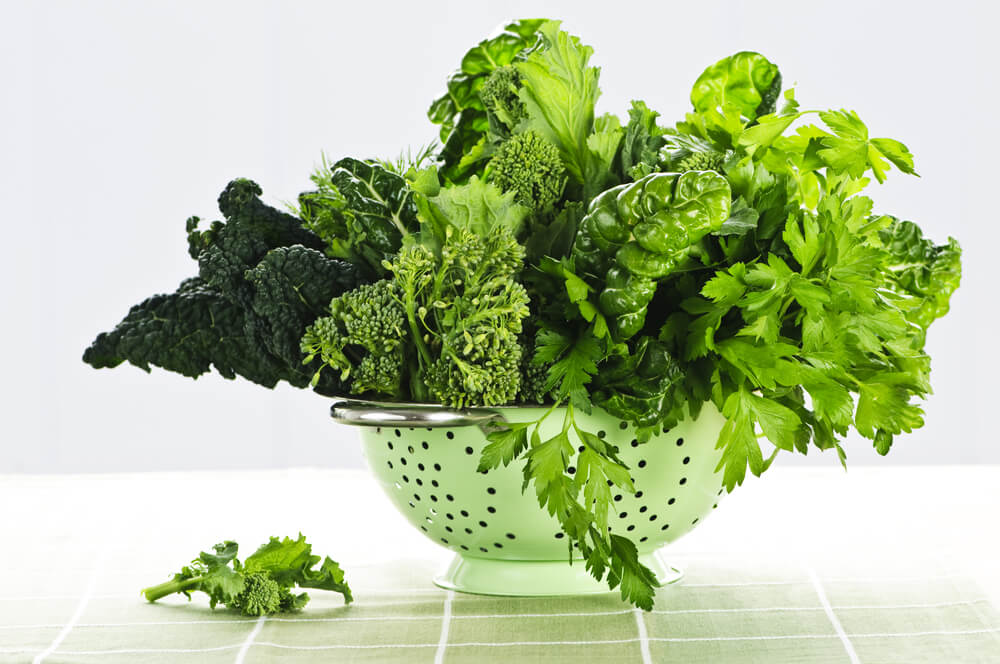
Leafy vegetables are power packed with goodies thus making them a superfood.
Why Dark Green Leafy Vegetables?
There are two types of iron present in food. Heme, which is better known to cure anemia and non-heme. The body absorbs 70% of heme from animal products. For the remaining 30% of heme, plant sources make a perfect option. Dark green leafy veggies like Kale, Spinach, Radish Greens, Mustard Greens, Arugula, Broccoli, and Swiss Chard are packed with Iron.
How to Use?
Green leafy veggies also can be consumed as salads, soups or the best way to incorporate them into your routine is to drink it as a green breakfast smoothie.
Things You Need: Veggies of your choice, Honey, Lime, Pinch of salt
Procedure:
After choosing your option of greens, wash and clean thoroughly. Now chop them and toss them into a blender along with a teaspoon of honey and a pinch of salt. Adding a dash of lemon to the blended smoothie gives it flavor.
6. Dry Fruits
There is a broad section of dry fruits available. Consuming them every day boosts your immune system.
Why Dry Fruits?
Dry Fruits like, almonds, dates, sunflower seeds, pine nuts, pumpkin seeds, pistachios, and cashews are perfect for both iron and Vitamin-C. Vitamin C boosts your immunity which in turn helps your iron absorption. Dry fruits are best to snack on, making them a part of an anemic diet.
How to Use?
Things You Need: Any nut of your choice
Procedure:
These are so easy to consume. All you need to do is just snack on them.
7. Cereals
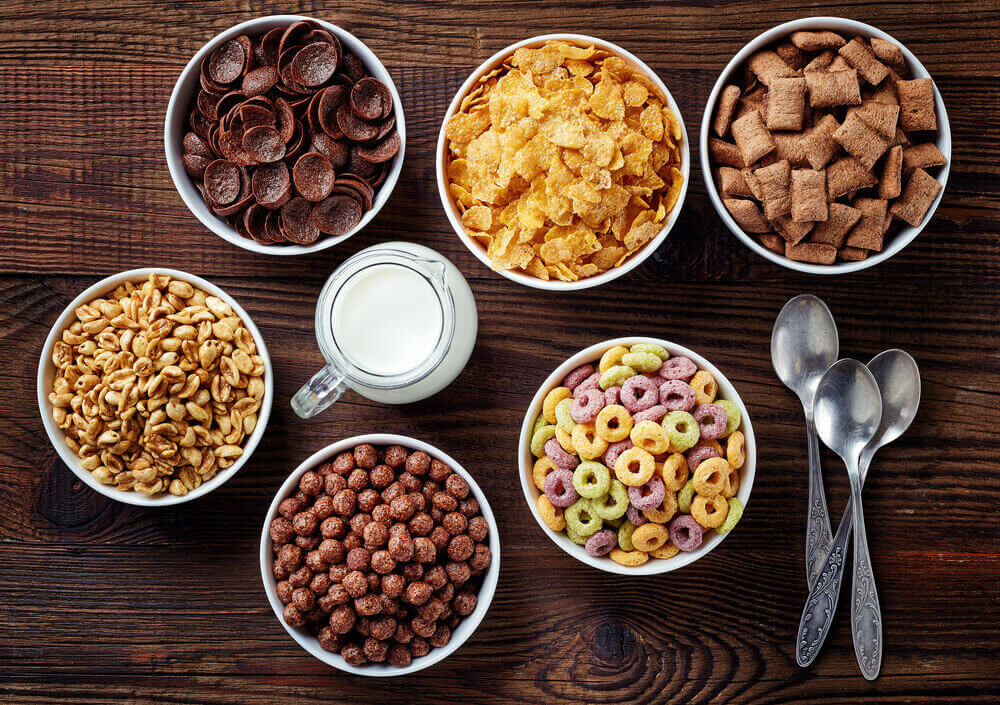
The most important meal of the day is breakfast. Incorporating iron in your breakfast helps you boost your immunity and also gives you nutrition packed food to kick start your day.
Why Cereals?
Fortified ready to eat cereals as oats and grits are one of the best sources of iron. These packaged breakfast cereals are again added with iron to compensate for the amount lost when processing. So, cereal usually contains 25 – 100% of the daily source of iron. This makes for a perfect iron deficiency anemia diet. Always check the mineral and vitamin composition on the package to know the iron levels present in the cereal.
How To Use?
Things you need: Pick any cereal of your choice from the store
Procedure:
After choosing the cereal of your choice, you can consume it directly from the package by adding either cold or warm milk. To make it more nutritious, you can add any fresh fruit to it.
8. Bread
Another easy to make and readily available breakfast food is all kinds of bread. There is a variety of bread you can choose from like whole wheat bread, multigrain bread, milk – bread, bagels, etc.
Why Bread?
Similar to breakfast cereals, many ready to eat bread products are fortified with iron. Adding bread to your breakfast routine is the best way to boost your mineral intake. Because of its easy availability and direct consumption, it is best to include it in the iron deficiency anemia diet(3).
How to Use?
Things You Need: Any bread of your choice
Procedure:
There is nothing more delicious than bread and eggs breakfast. You can also toast your bagel with some peanut butter to get the daily dose of iron into your body.
9. Pasta
Pasta is also one of the readily available fortified foods.
Why Pasta?
The amount of iron a person needs depends on age and gender. Women of reproductive age need 14.8mg per day and post-menopause around 8mg per day. Men over 18 years need 8.7mg per day. It is not possible for any one product to supply all the iron required for our body. Hence, they include a balanced diet incorporating fortified food like pasta(4) in it, making it an easy home remedy for anemia.
How to Use?
Things You Need: Pasta
Procedure:
Many ready to eat pasta variants are available in the market today. All you have to do is to follow the instructions mentioned on the package, and you have your iron packed fortified meal ready. Adding some greens and veggies makes it even more delicious and edible.
10. Peas

Picking foods which are high in iron for anemia is the best way to tackle it. Peas are a very good source of dietary iron.
Why Peas?
Although red meat, poultry, and seafood provide you an easy-to-absorb iron, plant sources make a good addition too. Peas offer a good chunk of iron which is essential for hemoglobin.
How to Use?
Things You Need: Peas
Procedure:
Boil peas and season it with some salt and pepper. You can eat it as a salad or a snack.
Also Read: 5 Natural Remedies to Lower Cholesterol
CURE 2: Essential Oils for Anemia
1. Helichrysum
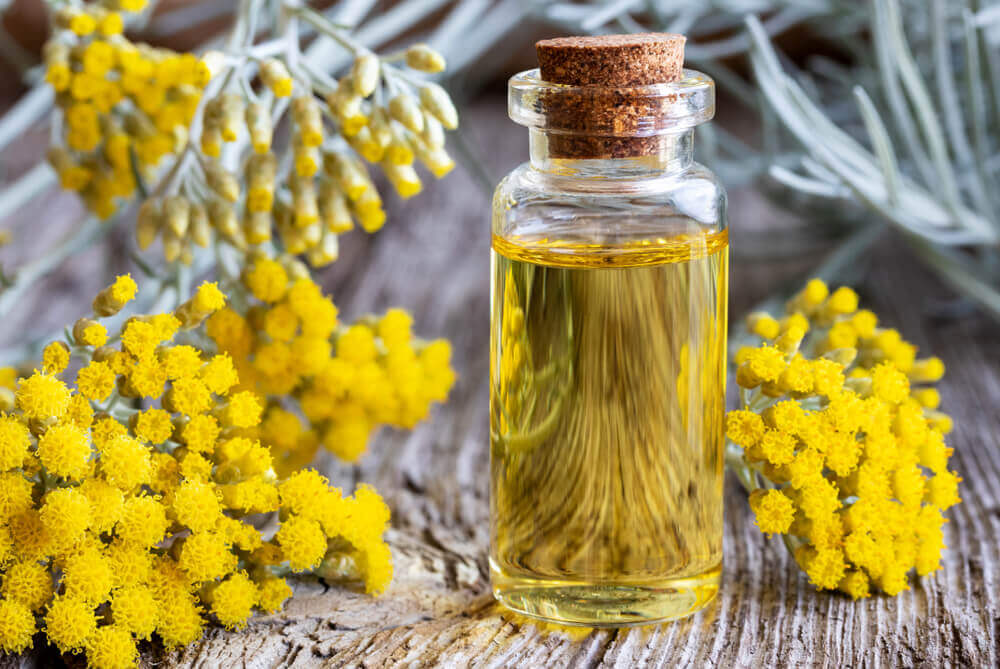
Helichrysum belongs to the sunflower family. Essential oils are another effective natural remedy to treat anemia.
Why Helichrysum?
Along with many inflammatory properties, helichrysum has been touted to have a significant effect on improving the levels of hemoglobin, thus playing a role in treating anemia. It is a known fact that the spleen helps in the production of red blood cells. This essential oil helps in keeping the spleen free from infections.
How to Use?
Things you need: Helichrysum Oil
Procedure:
Being a high-quality carrier oil, this can be used directly on the skin.
2. Lemon Oil
Lemons are superfoods used more than just for garnishing or to quench your thirst.
Why Lemon Oil?
Being the most significant source for Vitamin C, lemon helps a big deal in the absorption of iron. Lemon oil has a component called limonene, which has been researched and proved to have positive effects on the body. Also, lemon oil is known to stimulate the production of red blood cells, thereby treating anemia.
How to Use?
Things you need: Lemon Oil
Procedure:
The best way to use this is to add to the foods that are high in iron. One can also ingest it by diluting.
3. Ginger Oil
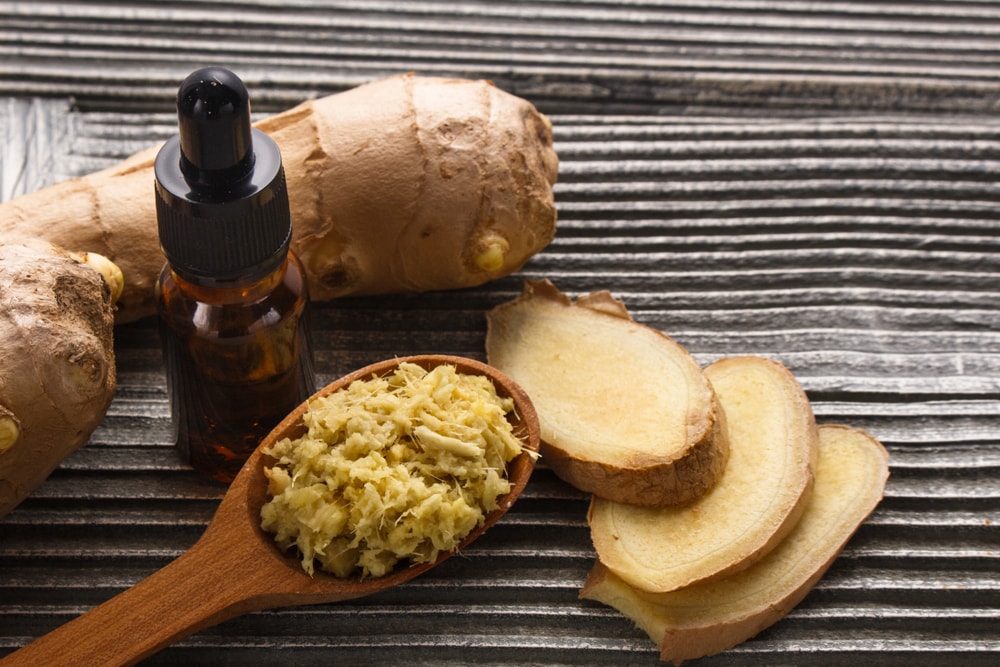
Ginger, which is a culinary delight is more than just that. The health benefits of ginger have been in use for ages now.
Why Ginger Oil?
Ginger oil is made from the freshly harvested ginger roots. Like lemon oil, ginger oil is very good in absorbing iron and treats iron deficiency anemia.
How to Use?
Things You Need: Ginger Oil
Procedure:
There are multiple ways in which we can use ginger oil. It can be used as a massage oil, bathing oil, diffuser, etc. If using as a massage oil, always use a carrier oil as suggested by the pharmacist.
4. Cinnamon Oil
Cinnamon oil is very good in treating anemia. It helps in relieving stress and thus promotes a healthy body.
Why Cinnamon Oil?
When suffering from anemia, your blood sugar levels often fluctuate. Using cinnamon oil stabilizes the imbalance and alleviates the fatigue and other related symptoms. After the menstruation when women suffer from blood loss, cinnamon is proven to restore the levels of hemoglobin(5), thus treating Blood Loss Anemia.
How to Use?
Things You Need: Cinnamon Oil
Procedure:
When combined with a carrier oil cinnamon oil can be used directly on the skin. But, in this case, to balance the blood sugar levels we can use the oil through a diffuser to sniff it, or you can also add it to your food.
Also Read: How CBD May Have Anti-Aging Effects on the Skin
CURE 3: Best Supplements for Anemia
-
Iron and Vitamin C
Even though we have a list of foods we can incorporate in our diet to treat anemia, taking supplements in case of severe cases of anemia can be more effective.
Why Iron and Vitamin C?
Iron supplements for anemia helps in maintaining the levels of hemoglobin in the body and Vitamin C aids in the absorption of Iron. The purpose of taking oral supplements(6) along with a balanced diet is to treat your symptoms of anemia by increasing the levels of hemoglobin.
How to Use?
Things You Need: Iron and Vitamin C supplements
Procedure:
While taking oral supplements, it’s always better to consult your doctor (7)and choose what is best for you. Based on the prescription, you can have them regularly to treat iron deficiency anemia.
Also Read: How to Purify The Liver and Blood Naturally
CURE 4: Alternative Treatments
Along with the above mentioned natural remedies for anemia, there are some other alternative treatment options to treat anemia. Few of them are:
Herbs for Anemia

Nutrients present in the body are not utilized to their fullest. Herbs can help the body maximize nutrients.
The group of herbs known as bitters helps in breaking down the digestive juices. There are many herbs which are an excellent source of minerals and vitamins. Several herbs like Dandelion root help cure anemia. Certain Chinese herbs like Dongquai and Rehmannia help in increasing the levels of hemoglobin.
Homeopathic Remedies for anemia
Homeopathy insists on a thorough analysis of the patient’s physical and mental health. Medication here is based on the complete study of physical state, genetics and mental health. The doctor also takes the menstrual health of the patient, complexion of menstruation, constipation, and indigestion into account.
Few most commonly used homeopathic treatments(8) for anemia are china Officinalis, Ferrum Metallicm, Phosphorous, and Lecithinum.
Other Suggested Therapies
- Acupressure – When pressure is applied to specific points around the liver and kidney areas, it can stimulate blood circulation.
- Detoxification – It is another suggested therapy to cure anemia.
Anemia is a common blood disorder. However, it can surely be cured with proper care and guidance. What to eat, what to avoid, taking supplements regularly and keeping a close eye on your well-being are the simple measures which can put anemia at bay. There are many simple home remedies for Anemia land alternative therapies which have been tried and tested to treat every type of anemia. Our excellent treatments are here to guide you to embrace an anemia free life.
Prevention
You can prevent anemia by eating a well-balanced diet. Iron, folate and vitamin B12 for anemia is the most preferred diet.
Other tips include:
- If you are a vegetarian or vegan, ensure to ask your doctor if you might need supplements.
- Avoid caffeinated drinks.
- Incorporate iron-fortified cereals and bread in your breakfast.
Do’s and Don’ts
- Red wine is a complete no-no when suffering from anemia. It slows down the process of iron absorption and intervenes with your medicines.
- Despite being packed with antioxidants and good for weight loss, both black and green teas slow down the process of iron absorption. So, it is better to avoid these teas.
- Not so good news for all the coffee lovers! It inhibits iron absorption. Avoid drinking coffee before and after meals.
- Regular exercise can help improve blood circulation and prevents you from feeling fatigued and weak all the time.
- Soy products aid iron absorption, while the non-fermented soy products prevent it. So, it is better to avoid non-fermented products until your hemoglobin levels are stable.
FAQs
1. What causes anemia?
Anemia is a condition caused by iron deficiency in your body. So, where there is a drop in the levels of iron, blood cannot carry enough oxygen to your body leading to anemia.
2. What foods have iron in them?
Red meat, poultry, beans, lentils, iron-fortified cereals, dark green leafy vegetables, and seafood are some of the iron-rich foods.
3. What is the normal hemoglobin level?
Normal hemoglobin levels are based on the person’s age and sex. For a female in the age range 12 – 18, the ideal levels should be 12.0 to 16.0 g/dl (grams per deciliter), and for above 18 years it is between 12.1 to 15.1 g/dl. Form men between the age group of 12 to 18 the ideal levels are 13.0 to 16.0 g/dl, and for men above 18, it ranges between 13.6 to 17.7 g/dl.
4. What is Iron deficiency anemia?
Iron deficiency anemia(9) is the most common type of anemia. Iron is essential for the production of hemoglobin. Improper diet, loss of blood, inability to absorb iron can result in iron deficiency which in turn causes low hemoglobin levels. As a result of this, your body is unable to produce enough hemoglobin resulting in iron deficiency anemia.
5. What is aplastic anemia?
Aplastic anemia occurs when your body does not produce enough red blood(10) cells (RBCs). RBCs are produced in the bone marrow every 120 days. When your bone marrow is unable to do so, the blood count decreases resulting in anemia.
6. What is Sickle cell anemia?
Sickle cell anemia is a severe condition. In this type, the red blood cells are flat disc-shaped(11) or sickle-shaped. Another significant difference here is the red blood cells have abnormal hemoglobin, thus giving the cell an unusual sickle shape. As they are sticky, the blood flow is often interrupted.
7. What is Pernicious anemia?
Vitamin B12 deficiency leads to Pernicious anemia(12). Most animal products are an excellent source of B12. But if you are a vegetarian or vegan, you may have a vitamin B12 deficiency. This vitamin is also needed for the production of hemoglobin. So inadequate levels of B12 cause Pernicious anemia.

